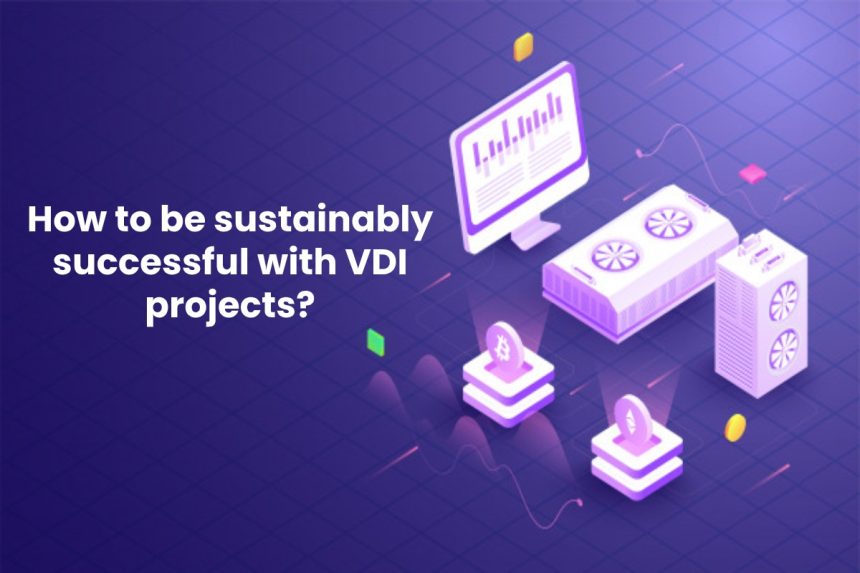Virtual Desktop Infrastructure (VDI) has been among the top 10 most discussed topics in IT circles for almost a decade. The need is vast at the moment. But what needs to be considered when implementing VDI projects so that it is successful in the long term?
When introducing a Virtual Desktop Infrastructure (VDI), companies should consider several aspects so that the implementation is sustainable.
Providers such as Citrix, VMWare, or Microsoft, who have been dealing with virtualization technology for many years, came up early. In the beginning, it was mainly about use in industries in which solutions require maximum efficiency and availability with high-cost pressure.
Now, however, further technical developments and the increased trend towards decentralized work have made VDI socially acceptable. The opportunities that VDI jobs open up are very clear under the pressure of the current crisis. Whether for a quick implementation of home office workplaces or for implementing long-term business continuity strategies – they need for VDI has increased enormously again. But if you are currently planning or currently implementing VDI projects. And also, you need project management tools like basecamp project management tool that helps in VDI projects.
VDI and then?
A constant service level must be guaranteed for reliable operation, guaranteed availability, and, at the same time, high user acceptance of VDI environments. It should be possible to react promptly to limitations in performance or the user experience. This is only possible reactively with the “classic” methods that manufacturers of various VDI solutions provide. It cannot simulate effects on production operations due to planned changes, updates, or new applications.
Change Management in IT
The smallest changes can have far-reaching consequences in complex virtualized environments due to butterfly effects. In the worst case, a supposedly small update can result in the entire system’s failure – depending on the length of the outage, the consequences for the operational business range from a minor operational disruption to massive drops in sales.
More and more business areas are being affected by digitalization, which exposes companies to a growing threat from cyberattacks, such as ransomware or hacker attacks. The patch management requires to guarantee the systems’ security is constantly changing the environment. As there must be an update on every application on average once every quarter.
From a business continuity perspective, it quickly becomes clear that extensive testing and proactive monitoring are essential. It is vital to test under realistic conditions with real workloads that reflect the actual day-to-day business.
The same applies to changes or extensions to the hardware. The determination of it should be in advance whether these resources for the VDI provision really deliver the required performance. This is the only way to guarantee that everything works as planned.
Automated Tests Increase Efficiency
Fully automated tests for the planned use cases make manual test procedures almost unnecessary. Automated tests can save a lot, not only in terms of budget but also in terms of the time frame for projects. The Completion of the VDI Projects can be much earlier. Day One employees can also work with a working solution. Employee satisfaction is a strategically important factor today to keep well-trained workers in the company. From the perspective of IT managers, this is also a top priority.
Anyone who relies on extensive monitoring and automated tests in their VDI environment right from the start ensures reliable work environment availability, fewer failures, and happier employees – all key factors for corporate success.
Also Read: Disabling Bluetooth on Smartphones: Why is it Necessary to Deactivate it?

